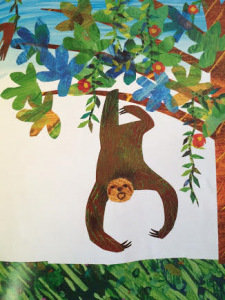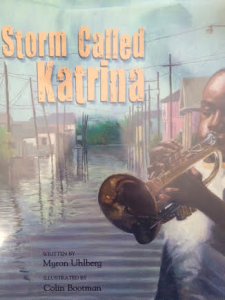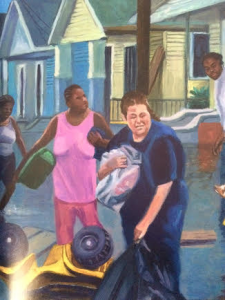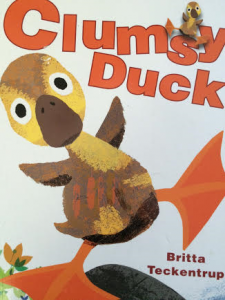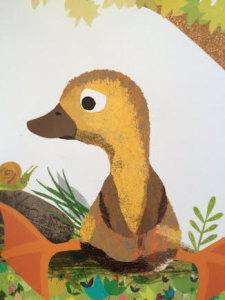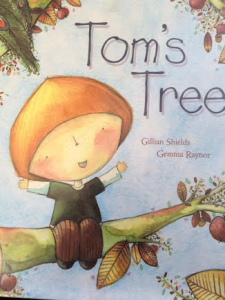
Author: Gillian Shields
Illustrator: Gemma Raynor
Publishing Information: Good Books, 2009
Number of Pages: 24
Genre: Fantasy
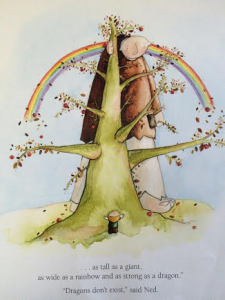
Analysis:
Tom’s Tree tells the story of a young boy named Tom who plants a tree and tells the reader all of the fantastical things he will be able to do in his tree when it grows. However, he becomes discouraged when the tree takes longer to grow than he had hoped, and his dreams are dashed. In the end, he finds that the tree will grow just as big and strong as he had hoped, and he is able to share this moment with his son when he is grown.
This is a very imaginative story, with illustrations that work well with the text to assist in the storytelling. Frankly, I found that the illustrations were additive, as the text alone would not have been able to tell the story as well. There are bright illustrations that cover both pages, and personify all the hopefulness Tom has for the future of his tree. Furthermore, we are able to see Tom’s changing facial expressions as time goes on and the process of the tree growing is taking longer than he had hoped. All of the illustrations are done without frames, letting us really dive into Tom’s fantasies with him. I found it interesting that readers were able to see the parallels between the size of Tom and the size of his tree as they changed over time; as Tom got older, the tree grew larger, showing the connection between the two rather than merely the passing of time.
The story can certainly serve to teach children to allow their imaginations to flourish, and that patience is a virtue. Although Tom’s tree did not grow as quickly as he had hoped it would, it still grew to just the size and splendor that he was hoping for as a boy. Furthermore, in my opinion, it was even more special because he got to share the tree and his ideas for it with his son when it had finally grown large enough. Therefore, I found that this was an imaginative story with valuable undertones that would be a fun read for young readers.


